Second-Tier CitiesMay 20, 2021
Planners Often Find Great Experiences — and Great Deals — at These Popular Second-Tier Cities By Christine LoomisSecond-Tier Cities
Planners Often Find Great Experiences — and Great Deals — at These Popular Second-Tier Cities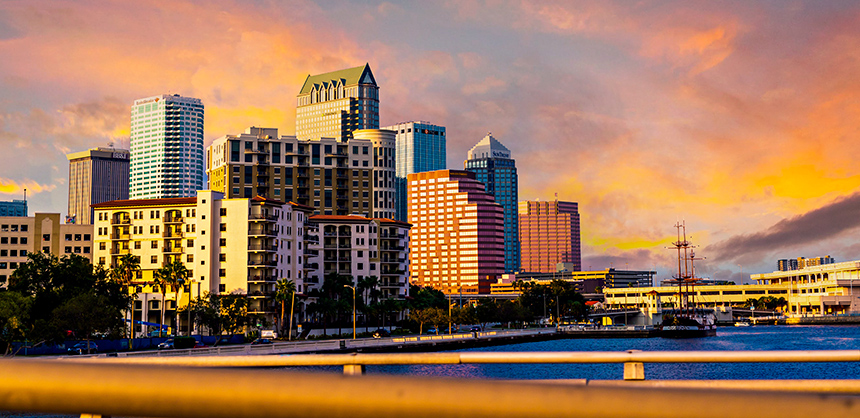
Tampa’s affordability made it a No. 1 option for the Association to Advance Collegiate Schools of Business.
Some of the nation’s so-called second-tier cities are a no-contest first choice for many organizations, with good reason. And as the COVID-19 pandemic’s stranglehold on the meetings and incentives industry wanes, these destinations offer attractive alternatives for planners seeking to host smaller, face-to-face or hybrid meetings.
Austin, Texas
“Second-tier cities generally have great airlift, ease of local transportation, a variety of entertainment options and plenty of dining choices,” says Doreen Madigan, director of events and member services with the National Coffee Association USA. The group’s annual convention was held in Austin before the pandemic. Aside from being a great coffee city, Madigan says, “Austin is very accessible from all parts of the country, including proximity and ease of access for South and Central America, where many of our attendees travel from. Austin has a welcoming and manageable feel that doesn’t overwhelm visitors, yet still has the infrastructure in place for groups to accomplish what they need to.”
The convention was set at the JW Marriott Austin. “We have a long-standing relationship with Marriott and have used this property three times,” Madigan says. “The staff is amazing under the most stressful of circumstances, and the property is well maintained, in a great location and has the perfect meeting space for our group.”
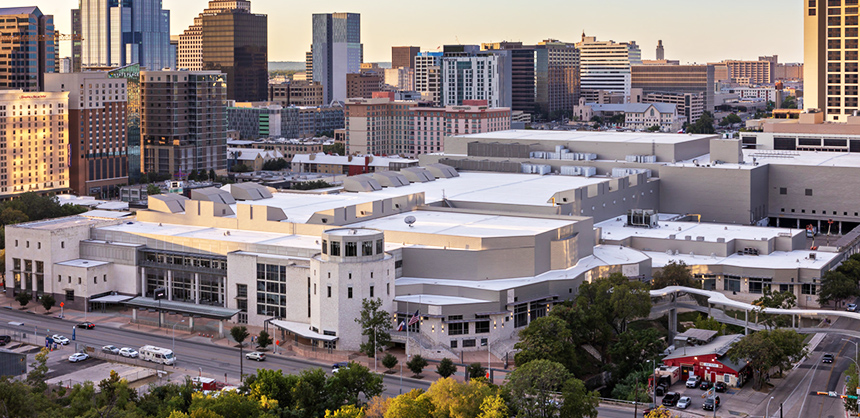
The Austin Convention Center in Austin, TX.
Madigan believes in working with CVBs. “A good CVB is an invaluable resource for anything you may need and can assist at a moment’s notice. Visit Austin is one of the best.” In terms of off-site venues, Madigan chose The Belmont, a downtown event venue, for a social event because of its proximity to the hotel and “quirky Austin vibe.” The staff, she adds were a pleasure to work with. “We also held a Coffee Gives Back Day of Service at a local middle school in an under-served community, which was a great team-building experience. Our attendees are huge into networking, and there were many private dinners planned around the city. All feedback was very positive.”
Madigan calls Austin a great choice “if you want a manageable city that your attendees will enjoy for its ease of use, fun, diverse entertainment options and welcoming residents.”
A 5,000-sf event lawn recently opened at the new Colton House Hotel, and The Austin Marriott Downtown debuted early this spring with nearly 60,000 sf of meeting space. Also, late last year, African-themed Kalahari Resorts & Conventions opened with nearly 1,000 rooms and 200,000+ sf on 350 acres just north of Austin.
Baltimore, Maryland
“I don’t think of cities in terms of tiers,” says Mary Pat Cornett, CAE, CMP, chief strategy & operations officer with the American Society for Nutrition. “Every meeting has its match, and vice versa. Baltimore competed favorably with cities that might be perceived to be in other tiers.” Baltimore met the group’s criteria for meeting/exhibit space, hotel package, airlift, ease of access, service levels and cost. Its central location on the East Coast with easy access to Baltimore/Washington International Thurgood Marshall Airport, Ronald Reagan Washington National Airport and Amtrak was a positive, and the Baltimore Convention Center (BCC) was a good fit for their event held before the pandemic. Additionally, proximity to Johns Hopkins was a big plus in terms of access to speakers and attendees.
Functions were set at the Hilton Baltimore Inner Harbor and BCC, whose staff, Cornett notes, took care of the group from start to finish. Cornett says her attendees have high expectations for quality food service at a meeting focused 100% on nutrition. “CenterPlate and our team worked out meal options that addressed the 587 special requests we received, including 82 individual food allergies.”
Leftover food and food waste was diverted, donated or composted. “I was impressed by the quality of the food service and sustainability initiatives,” Cornett says. “The Baltimore Convention Center and Centerplate participate in a program funded by the World Wildlife Federation, and are leading the way in event sustainability. This was appreciated by our attendees as environmental sustainability and is an important issue in nutrition and food science.”
Also impressive was the CVB. “Visit Baltimore supported us during site selection, planning and execution,” she says. “They were instrumental in helping us learn the city and connect with all the key assets. We strategized with them on marketing and they gave us great insights into the personality of the city. Baltimore has a compelling story to tell about grit and determination, the history and neighborhoods. Inner Harbor is great, but there’s so much more.”
The Hilton being adjacent to Camden Yards was a plus. “We had a reception on the patio overlooking the park. The meeting space is very well laid out and well equipped, and I love the Diamond Tavern with Old Bay on every table,” Cornett adds. Attendees were equally enthusiastic. “We saw lots of social media from attendees enjoying the Inner Harbor, Fells Point, museums and, of course, crabs. They found Baltimore easily accessible and affordable,” Cornett says. “We really came to love the sense of community, diversity and comeback spirit of Baltimore.”
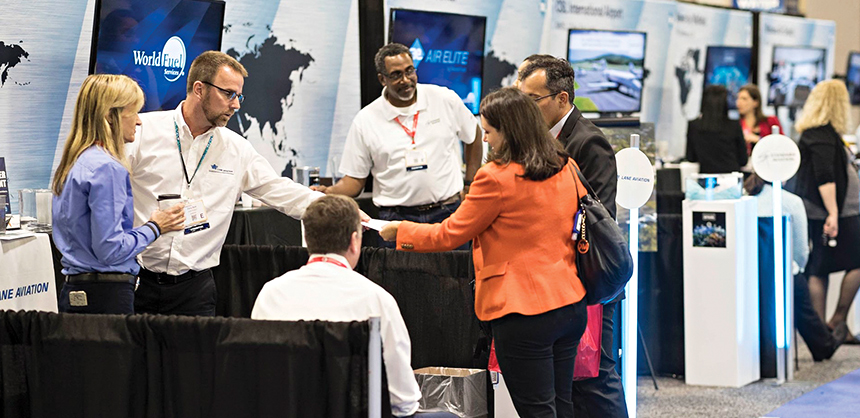
Charlotte, North Carolina was the perfect destination for the National Business Aviation Association’s Schedulers & Dispatchers Conference, held last year before the pandemic lockdowns.
Charlotte, North Carolina
Mike Nichols, CAE, CAM, senior vice president, strategy & innovation, with the National Business Aviation Association, had more than 2,500 attendees at the Schedulers & Dispatchers Conference in Charlotte held before the pandemic lockdowns. “Second-tier cities,” he states, “often strive to create community around the meetings business. Convention centers and hotels often are mixed with office buildings and residential housing, creating an ecosystem of restaurants, shopping and entertainment venues appealing to attendees, as well as exhibitors. The residential component truly adds to this sense of community as visitors mix with locals.”
Charlotte offers this attractive mix. Plus, Nichols says, “The new hotel product that’s come online makes Charlotte even more competitive. The development of new hotels has motivated existing hotel owners to invest in renovations and upgrades. Hotel options exist at a variety of price points across major brands, which is appealing for those who take their hotel loyalty program seriously.” Additionally, he says, “The dining scene in Charlotte is impressive, ranging from hole-in-the-wall joints serving mouthwatering North Carolina barbecue to high-end steakhouses, and everything in between. The craft beer movement has a strong hold on Charlotte, with options throughout the neighborhoods, as well as brewery tours for those who come early or stay after the conference to get a deeper flavor of the city.”
Another plus, Nichols says: “Second-tier cities allow planners the opportunity to stretch their dollars while introducing attendees to something new and unique to that area. Many second-tier cities work hard to tell their story; they’re thoughtful about what’s appealing and why people should choose their city.” Nichols has only good things to say about the CVB. “All of our interactions with Visit Charlotte were extremely positive, from the early days of the sales process through [months] after our conference. I have the highest respect for everyone on the CVB team at all levels.”
Nichols adds, “Prior to the conference, the topic of data analytics came up and turned to how we measure success of our events from an attendee and exhibitor perspective. When I acknowledged that our survey instrument for this conference is not as strong as I’d like due to budget limitations, the CVB offered to be part of the solution, to collaborate with me to develop attendee and exhibitor surveys that would give me new insights about the conference, while giving Charlotte insights from our industry. This was outside-of-the-box thinking,” he says. “And, as I discussed the specifics of the surveys with the CVB’s data expert, he didn’t view this as more work dumped on his plate; instead, it was a unique opportunity he was excited to pursue.”
The Charlotte Convention Center was another positive, with spaces that worked well for general sessions, small-group meetings, education and exhibits. “We anticipated bottlenecks going from the pre-function space down the escalators to the exhibit hall, but didn’t experience any delays or challenges with the flow during our conference,” Nichols says. “Food and beverage costs are also lower than at many other convention centers, but quality doesn’t suffer as a result.” To say March 2020 was a challenging time to meet is an understatement, Nichols says. “Knowing I had the CVB by my side made it much more manageable. The CVB and convention-center staff want the best for planners. If you succeed, they succeed and, hopefully, you’ll return in the future. We’re already looking at opportunities to go back.”
Construction of a new connector between Bojangles Coliseum and Ovens Auditorium wrapped last year, adding pre-function lobbies, an outdoor plaza and a pedestrian connection. The Charlotte Convention Center is undergoing a $126.9 million expansion adding 50,000 sf, and multiple hotels will open between now and 2022.
Columbus, Ohio
Pam Troop, CMP, senior director of meeting industry elections & leadership events for ASAE, the Center for Association Leadership, sees many positives in second-tier cities. “What they lack in size, they make up for with hospitality, convenience, attentiveness and local charm. Having a meeting in a second-tier city is a focal point for everybody in town. People who work and live in second-tier cities have a special pride.” Additionally, she notes, there’s easy access through smaller, more intimate airports, walkable experiences and cost effectiveness.
ASAE’s convention, held before the pandemic, was set in Columbus. “The airport is minutes from downtown, has 40 nonstop flights daily, and Columbus is an easy drive from many states. With many hotels and restaurants adjacent to or walkable from the convention center, it was easy for attendees to see the city by foot.” The group of more than 5,000 used 18 hotels of different brands and price points. While a few required shuttle service to the Greater Columbus Convention Center (GCCC), Troop says traffic was never an issue — another plus of smaller cities.
“So many things stood out for us, but the customer service and warm, genuine welcome are among the top,” Troop says. “The city came together to provide top-notch customer service from members’ arrival at the airport, to the F&B, to music and a warm welcome throughout the meeting, to a warm send off with a reminder to ‘Come back,’ and a ‘Thank you for being here.’”
Columbus has a wealth of off-site venues. ASAE used Nationwide Arena, the Columbus Museum of Art, Ohio State University’s golf course and the Jack Nicklaus Museum. Opening night was at the renowned Center of Science & Industry, and closing night was set at Express Live. The majority of functions were at the GCCC, where the F&B, Troop says, “is creative and delicious, some of the best we’ve experienced.”
The CVB was a huge factor. “Without the expertise of the staff at Experience Columbus and the myriad of options to choose from, ASAE’s meeting could not have been the success it was,” Troop says. “The staff is so customer-service driven, so detailed in their logistics and communications, and so eager to showcase their city. They were with us in the planning every step of the way.” To planners considering Columbus, she advises, “Communicate early, often and express what’s expected. Trust me; they’ll deliver. They’ll help you build attendance and create an experience your members won’t soon forget.”
The GCCC is now fully LEED Silver certified. They were also the first convention center to be Certified Sensory Inclusive, meaning they accommodate individuals with conditions such as autism spectrum disorder, PTSD, dementia and other health concerns affected by over-stimulation and noise. Hilton Columbus Downtown will add 468 rooms in a new tower with rooftop event space, slated for 2022.

Indianapolis’ hotel options and restaurants annually attracts the American Coatings Show and Conference. Photo by Keith Griner
Indianapolis, Indiana
What’s great about Indianapolis? “Indy has a great airport, excellent hotel options, affordability, excellent restaurants, hotel connectivity to the convention center and many restaurants, great service and the desire to build long-term industry partnerships,” says Cheryl Matthews, V.P. events & exhibitions, American Coatings Association/AC Media.
The city is the official home of the American Coatings Show and Conference, which attracts up to 10,000 attendees. Unfortunately, last year’s event was cancelled due to COVID-19, but the next one is already booked. The Indianapolis Marriott Downtown has served as the group’s base hotel for multiple years. “We have a large international participation, so an international airport is a major plus. The downtown area was designed for large events, and Indy has excellent hotel, restaurant, shopping/entertainment packages, rivaling many ‘first-tier’ cities in my opinion,” Matthews says.
She calls the Visit Indy staff “helpful, responsive and first-class professionals on every level” and, with the last-minute cancellation of last year’s event, she says her partners in Indianapolis “really stepped up to make it as painless as possible.” The group uses halls F-K, the 500 Ballroom and a significant number of meetings rooms at the Indiana Convention Center (ICC). “The convention center is in excellent condition and always well maintained. We also never experience Wi-Fi issues, which is greatly appreciated by our attendees and exhibitors,” Matthews says.
While she adds that the staff is excellent, the location is also a huge benefit. “The center is connected to thousands of hotel rooms and dozens of great restaurants, which means we don’t require shuttles.” There are no official functions beyond the convention center, but exhibitors often use city venues. “Many of our exhibitors have held private events at Lucas Oil Stadium, and countless restaurants downtown and right outside of the downtown area,” Matthews says. “I’ve found Indy to be extremely flexible in working with groups to both win and retain business. The convention center and hotels work extremely well together, and they understand that we all have a common goal of providing a great experience for everyone that attends.”
In addition, the Hyatt Regency Indianapolis recently completed a renovation to its meeting and event spaces, lobby and restaurants.
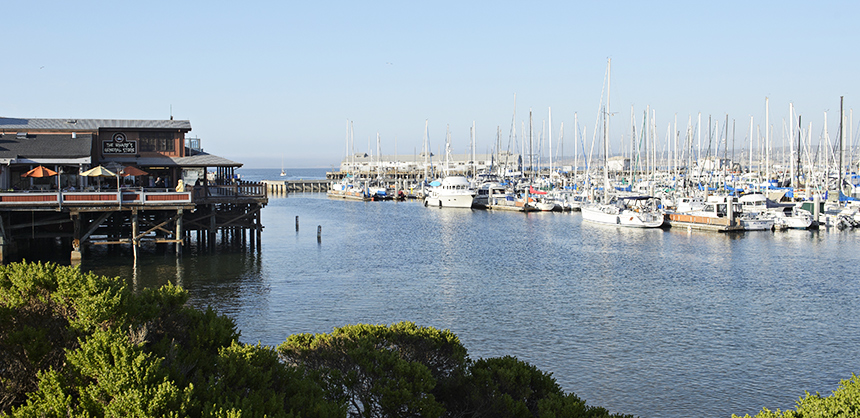
Monterey, California
Monterey, California
The State Association of Retirement Systems (SACRS) has met in Monterey multiple times since 2005, and that’s just one of the organizations Sulema Peterson, SACRS executive director and owner of Sulema Peterson & Associates, has brought to the city. “The location is great because our membership base is all over California.” Peterson says. “The hotel room rate is always a factor, and Hyatt and Marriott offer the best rate possible for our groups. We utilize the Marriott as overflow.”
The weather, Peterson says, is a positive, as are the many restaurants frequently booked for client dinners. Hyatt Regency Monterey Hotel & Spa on Del Monte Golf Course provides space for general sessions and breakouts and, in addition to the “wonderful staff and spacious rooms,” Peterson says the group likes having a golf course on property.
One notable off-site venue is The Barns at Cooper Molera, a historic-site-turned-event-space loaded with charm and character. “Great food, service and a beautiful setting,” Peterson says. “The city did a great job restoring the space/museum and grounds. I would definitely bring a group back.”
Peterson points to the CVB as an excellent partner. “[Monterey County Convention & Visitors Bureau] was fantastic. I utilized staff to assist with my off-site venue selection and transportation needs, and I was even able to have [a CVB staffer] sing the national anthem.” Her advice to planners: “[The CVB] will connect you with all the right people, venues and services to make your event a success.”
Pittsburgh, Pennsylvania
Second-tier cities typically afford ease of access and transportation, says Hoag Holmgren, executive director, POD Network in Higher Education. And they welcome conferences to the very heart of the city. “We love Pittsburgh because it’s a small city, but has many of the features of a big city, such as restaurants and professional sports.”
The Westin Pittsburgh served as base hotel for the group, and sessions were held at the David L. Lawrence Convention Center. “Even though 1,200 people is not a huge number, we were able to use a portion of the space in a way that didn’t make us feel like a small group in a huge venue.”
Holmgren says Pittsburgh is a city with a lot of “hidden treasures,” and he encourages planners considering the city to do a lot of research to discover them.
The David L. Lawrence Convention Center’s upgrades include a revamped rooftop design and $1 million digital signage project. The Industrialist Hotel, Pittsburgh, Autograph Collection located downtown recently opened, and The Landing Hotel, connected to Rivers Casino, is expected to open later this year after construction was suspended last year.
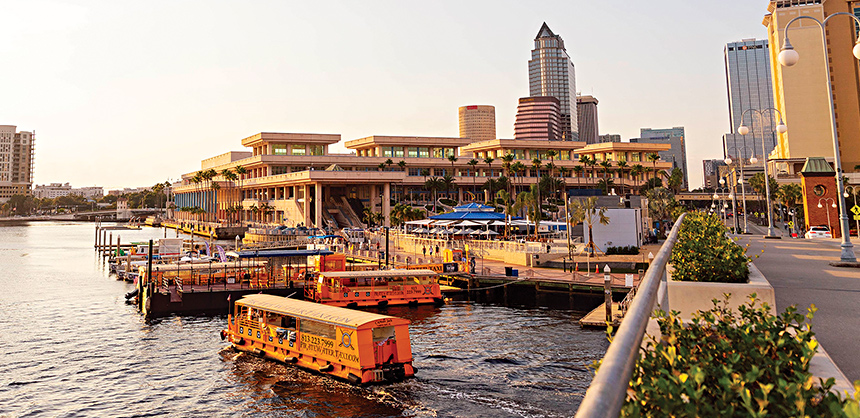
Tampa, Florida
Kelly Warhola, CMP, formerly V.P. of global conference & event strategy with the Association to Advance Collegiate Schools of Business (AACSB), says that the company — “an international association with over 100 countries represented” — held an event in Tampa before the pandemic. “Tampa is an outstanding location for so many reasons,” she says. “As a first impression, Tampa International Airport is one of the best in the country, with ample domestic and global direct flights from key countries and cities around the world.”
She says pricing on accommodations, leisure activities and meals “is extremely affordable for those members in the association who represent global universities and business schools, many with limited budgets.”
Tampa’s enviable assets include Riverwalk, where the Tampa Convention Center (TCC) is located. The 2.6-mile walkway along the Hillsborough River has parks, restaurants and water taxis along the way. Bayshore Boulevard, which fronts Tampa Bay, has an adjacent sidewalk billed as “the world’s longest continuous sidewalk,” and runs for 4.5 scenic miles. And there’s plenty of nightlife as well.
“Tampa is a second-tier city that feels comfortable and relaxing, yet has choices of excellent restaurants, amenities and activities similar to a larger city,” Warhola says. “It’s a first-tier city of opportunities and activities with second-tier size and affordability.” The Tampa Convention Center, she notes, has a perfect layout for the space-intensive program, and “is walking distance from a handful of flagship hotel properties. [The AACSB] chose the [Tampa Marriott Water Street], across from the convention center, due to the large number of sleeping rooms and additional meeting space for ancillary meetings, including the board of directors meeting. The hotel has an outstanding staff that’s creative and willing to work with your event needs and budget.”
Warhola advises planners to check what’s going on during their desired conference dates. “It’s not unusual to have a hockey game and outdoor concert the same night. This is typically a positive for groups, but certainly can cause a bustling downtown on some nights, too.”
Her best advice is to work closely with Visit Tampa Bay. “Work with them early on to ensure you’re maximizing the Tampa experience and creating a well-designed, intentional event that will create strong learning opportunities. Just as important, I believe, are the opportunities for attendees to create connections and network through experiences in the city. Tampa has so much to offer for all event and meeting types whether large, small, global, domestic, training or strategic planning — the list could go on and on.”
The newly refurbished Seminole Hard Rock Hotel & Casino Tampa features a new 500-room tower, while a JW Marriott Tampa Water Street recently opened just steps from the Tampa Riverwalk and Amalie Arena. Also, multiple properties are slated to soon open, including the 5-Star Tampa EDITION, scheduled to debut near the end of the year. | AC&F |








